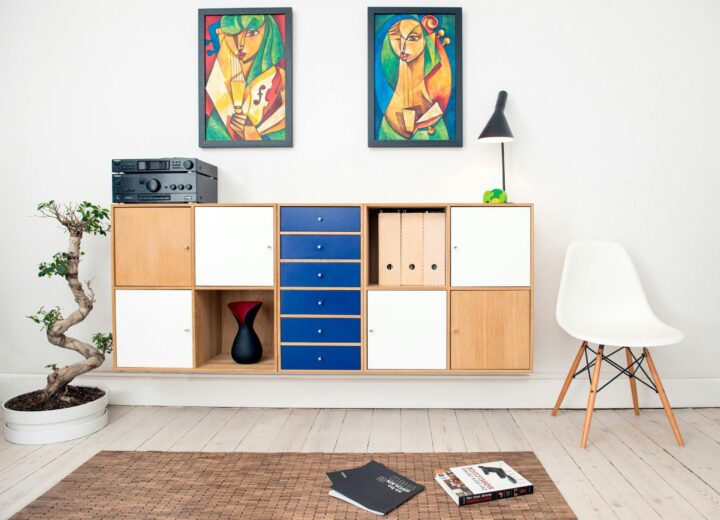The following contribution is from another author.
As more people seek to live a more environmentally friendly lifestyle, making sustainable choices for home furnishings has become a popular focus. Opting for eco-friendly furniture reduces your carbon footprint and contributes to a healthier home environment. By selecting pieces that are responsibly sourced, durable, and made from sustainable materials, you can create a beautiful, greener home. Here’s a guide to making sustainable furniture choices that align with your values and style.
1) Prioritize Quality and Longevity
One of the most effective ways to make your home more sustainable is by choosing furniture that is built to last. High-quality, durable furniture can reduce the need for frequent replacements, cutting down on waste and saving resources over time.
- Solid Wood Pieces: Solid wood furniture is often more durable than particleboard or composite options. It offers a classic aesthetic and can be easily refinished to extend its life. Look for important pieces made from certified sustainable wood sources, such as FSC-certified wood, to ensure that the material is harvested responsibly.
- Strong Wooden Bed Frames: A sturdy bed frame is a great investment in both comfort and sustainability. Check out a solid wood bed frame available at Reinforced Beds for options that offer durability and support while being crafted from high-quality, sustainable wood. Such choices ensure you’re not only making an eco-friendly decision but also investing in a bed that will last for years.
2) Choose Furniture Made from Recycled or Upcycled Materials
Choosing furniture made from recycled or upcycled materials is an excellent way to support sustainable practices. These pieces often have a unique charm and reduce the demand for new raw materials.
- Reclaimed Wood: Reclaimed wood is salvaged from old buildings, barns, or furniture, giving it a new life. Furniture made from reclaimed wood has a distinct character, with a rustic appearance and history that can add charm to any room. By choosing reclaimed wood, you help reduce deforestation and lower the energy consumption associated with processing new timber.
- Recycled Metal and Plastic: Some modern furniture brands offer pieces made from recycled metal or plastic. These materials are often transformed into sleek, contemporary designs that look great in minimalist and industrial-style homes. Recycled materials help reduce landfill waste and lessen the environmental impact of producing new materials.
3) Support Ethical and Sustainable Brands
When shopping for new furniture, look for brands that prioritize sustainability and ethical practices. These companies often use environmentally friendly materials, fair labor practices, and green manufacturing processes.
- Transparency and Certifications: Choose brands that are transparent about their supply chain and use certifications like FSC, GREENGUARD, or GOTS. These certifications ensure that products meet strict standards for sustainable sourcing, low emissions, and organic textiles.
- Local Artisans and Craftspeople: Supporting local artisans and craftspeople is another way to make sustainable choices. Handmade furniture often uses less energy than mass-produced pieces, and buying locally reduces the carbon footprint associated with transportation.
4) Opt for Multi-Functional Furniture
Choosing furniture that serves multiple purposes is a smart way to minimize consumption and make your home more efficient. Multi-functional pieces are particularly useful in small spaces, allowing you to maximize the use of each item.
- Convertible Sofas: A sofa bed or a convertible sofa can serve as both a seating area and a guest bed, eliminating the need for extra furniture. This versatility helps save space and reduces the need for additional materials.
- Storage-Integrated Furniture: Look for beds with built-in storage drawers or coffee tables that double as storage chests. These dual-purpose pieces help keep your home organized while reducing the need for additional storage furniture.
5) Think Long-Term When Choosing Furniture
One of the key principles of sustainability is to choose items that will stand the test of time. Avoid trends that may quickly go out of style and focus instead on timeless designs that you’ll love for years to come.
- Classic Designs: Opt for classic, versatile designs that can adapt to different styles and tastes. These pieces can easily be updated with new cushions, throws, or slipcovers without the need for a complete replacement.
- Durable Construction: Pay attention to the construction quality of furniture, such as dovetail joints in wooden furniture or welded frames in metal pieces. Well-made furniture is less likely to break down or become obsolete, making it a more sustainable choice in the long run.
Are You Ready to Create a Sustainable Home?
Creating a greener home doesn’t mean sacrificing style or comfort. By making sustainable furniture choices, you can enjoy a beautiful living space while minimizing your environmental impact. Whether you choose strong, durable wooden beds, embrace upcycled pieces, or opt for multi-functional designs, every decision you make contributes to a more sustainable and eco-friendly lifestyle.

















In That’s Not My Neighbor, the quiet suburb hides dark secrets. Explore the game’s website to begin your journey in solving the unsettling mysteries waiting right next door.